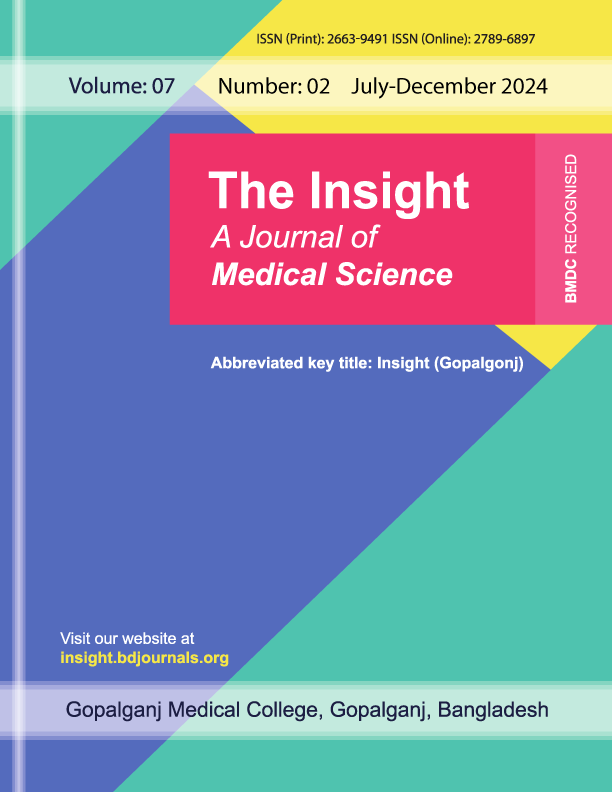Clinical Parameters, Risk Factors, and Serum Sodium Level on Admission in Patients with Spontaneous ICH
Publiée 2025-04-30
Mots-clés
- Intracerebral hemorrhage,
- Hyponatremia,
- Serum sodium,
- Stroke outcomes,
- Bangladesh
(c) Copyright The Insight 2025

Ce travail est disponible sous la licence Creative Commons Attribution 4.0 International .
Comment citer
Résumé
Background: Spontaneous intracerebral hemorrhage (S-ICH) is a critical neurological emergency with high morbidity and mortality, particularly in low-resource settings. Although clinical parameters, such as hematoma volume and Glasgow Coma Scale, are widely used to predict outcomes, the role of serum sodium levels at admission remains underexplored in the Bangladeshi population. Objectives: This study aimed to evaluate the clinical characteristics, admission serum sodium levels, and their association with early hospital outcomes in patients with spontaneous ICH. Methods & Materials: A hospital-based observational study was conducted at Dhaka Medical College Hospital from January 2015 to December 2016, involving 100 patients with first-ever spontaneous ICH. Clinical presentations, neuroimaging findings, and serum sodium levels were recorded. Outcomes such as in-hospital mortality and functional status at two weeks were analyzed. Results: The majority of patients were aged above 60 years, with hypertension being the most common risk factor (68%). Hyponatremia on admission was observed in 20% of patients. Most hemorrhages occurred in the putamen (48%). At the end of two weeks, 62% of patients exhibited disability, and the in-hospital mortality rate was 18%. Conclusion: Admission hyponatremia is a notable biochemical abnormality in spontaneous ICH and may be linked to poorer early outcomes. Incorporating sodium monitoring into initial assessments could enhance prognostication and care strategies in S-ICH management.



